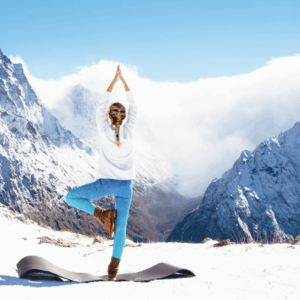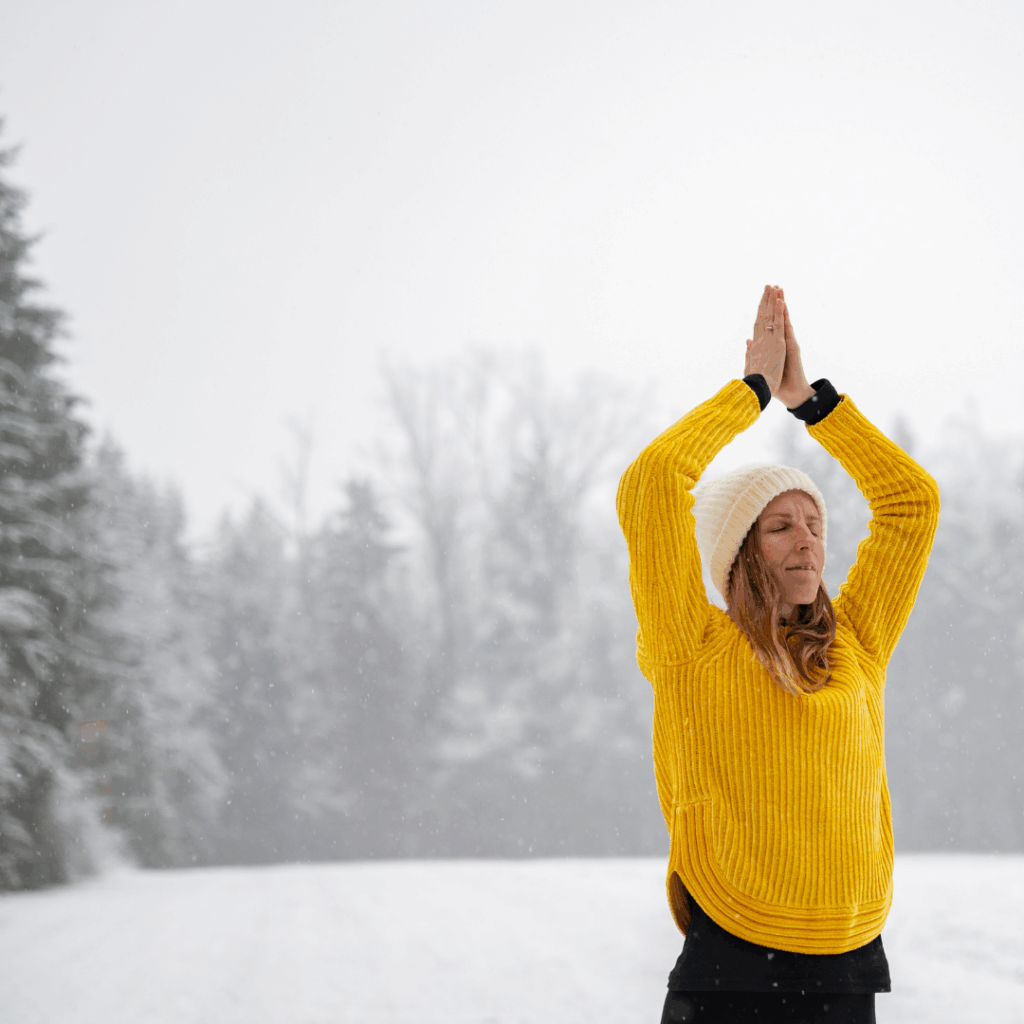From Downward Dog to Double Pole: Yoga's Role in Nordic Skiing
With fall weather comes the opportunity to participate in a myriad of off-season cross-training activities, and you are probably already enjoying many of them now– activities that get you outside in beautiful settings, work major muscles and keep you fit for your winter sports. Maybe you also have a practice that keeps you mentally fit year-round.
Yoga Cross-Training for All-Seasons
What if there was one thing you could include in your weekly cross-training to improve flexibility and balance, increase strength and breathing capacity, sharpen mental focus and concentration, prevent injuries, enhance endurance, aid recovery, and even improve your posture and increase your sense of well-being? And what if this was something you could do rain or shine, indoors or out, alone or in a group, whether you have 5 minutes or 90 minutes?
You can achieve all these goals and more by including yoga in your weekly routine.
“But I’m not flexible!” I hear some people say. True, yogis sometimes appear more flexible than the average person, but not always, and it’s not because they started out that way. It’s sort of like saying “I can’t lift weights because I’m not strong.” We practice at things we want to improve and it’s undeniable that strength and flexibility can improve your function on the ski trail. But besides the benefits of flexibility and strength and balance, yoga is also an “inside job” or, as one of my teachers likes to say “yoga is not a work-out, it is a work-in.”
Mindfulness and Mental Clarity
If you approach yoga as only a physical exercise, you may be missing most of the benefits. It’s not a replacement for cardio or strength training, but it will support those activities.
A dedicated yoga practice can not only enhance breath capacity, but also promotes mindfulness and mental clarity, so that you can make better decisions on the trail, and experience less stress and anxiety, so you can really enjoy every moment on skis.
Tailoring Yoga to Your Individual Needs
The ideal approach is to find a teacher who can give you one-to-one instruction based on your goals. There are lots of group classes available, including online, and those are great once you know how your body responds to various stresses, but I suggest approaching yoga as a personalized practice. Just as we wouldn’t open the medicine cabinet and grab whatever pill bottle is available without considering what we are taking and why, we want to tailor our practice to our needs. A vigorous physical practice may be appropriate for a young person in excellent health, but when that person is a little older or is dealing with an injury, then the practice should change to accommodate the situation.
Once you know what you need, you can find the right tools to achieve your goals. And the joy of yoga is that it is an endless toolbox that meets us wherever we are.
So suppose you’ve had some yoga experience, you know what your body is capable of, and you are looking for a skier-specific practice that will achieve all those goals of strength, flexibility, balance, recovery, relaxation, calm and general well-being.
Two Sequences: Pre-Ski Building Energy and Post-Ski Recovery
Here are two simple sequences that will benefit all skiers. One pre-ski energizing practice, and one for after-ski recovery.
Begin with Breath
The key to all yoga practices is breath awareness and control. Close your mouth and breathe through the nose if possible. The ideal breath ratio is 5-6 second inhale, 5-6 second exhale. Feel the breath flowing all the way down, filling into the diaphragm until the belly expands on the inhale, and feel the navel move in as the breath flows up and out the nose on the exhale.
Energizing/Balance Practice:
This practice was created to focus on areas that skiers need to stay upright in challenging terrain, and to easily get up if we fall.
This sequence can be done pre-ski or any time you want to tune-up your balance and flexibility.
These can be done individually, while holding each for 5-10 breaths, or as part of a flowing practice.
Warrior II- Stretches and strengthens groins, legs and hips, opens chest, builds stamina. Stand with arms outstretched, feet wide, ankles aligned under wrists. Turn right foot 90 degrees to the right and bend right knee to up to 90 degrees. Keep spine upright and arms reaching in opposing directions. Turn head to the right and focus on the horizon. Find a balance between effort and ease in the physical body. Keep breath steady. Repeat other side.
Warrior I- Stretches and strengthens groins, legs, hips, opens chest, builds stamina. From Warrior II, turn hips and torso toward right foot and angle back foot toes in a few degrees. Adjust feet to about hip width apart for comfort and bring hands outstretched overhead. Focus your gaze on the horizon. Option to clasp hands and gaze upward for additional balance challenge. Repeat other side.
Warrior III- Stretches and strengthens groins, legs, hips, builds balance and stamina. From Warrior I, lift back foot off ground. Straighten front knee and tilt forward up to 90 degrees (torso perpendicular to floor). Balance on standing leg, keeping hips even with floor. Arms at heart or overhead. Focus the gaze on a non-moving point and keep the breath steady.
Horse Pose- Stretches and strengthens groins, hips and legs, builds stamina. Stand with feet wide, toes pointed out, and arms outstretched. Bend both knees and elbows to up to 90 degrees while keeping spine straight and upright. Option to bring movement in upper body as lower body stays steady, by alternating bringing arms overhead, out to side, reaching forward and hands to heart with each breath.
Low Squat- Stretches groins, hips, calves, knees, lower back. From standing with feet wider than hip width apart, drop seat as far as possible toward floor while keeping feet flat on ground. Once in squat, reach arms out, palms up on floor. If feet can’t be flat, heels can be supported by folded blanket or yoga mat.
Tree Pose- Builds balance and strength in legs and feet. Especially useful when standing on one ski to remove snow from bindings! Stand with feet hip width apart, bring the sole of the right foot to the inner calf of the left leg. Point right knee outward to the right. Bring hands to heart or reach overhead. Feel steady grounding in left leg as foot presses into leg and leg into foot. Allow the body to sway slightly with breath. For balance challenge, try closing eyes for a second or two. Repeat other side.
Here is a practice created to aid after-workout recovery. Any of the following can be done individually or in combination and held for 2-12 minutes each.
Calming/Recovery Practice:
Child’s pose- Stretches hips, thighs and ankles. Start on hands and knees, sink hips back to heels and extend the arms, palms down on the floor, forehead resting gently on the floor. Widen knees and bring feet together to create a deeper hip opening.
Reclining Bound Angle Pose- Opens hips and groin. Lie on back with soles of feet together and allow the knees to fall open to the sides. Rest hands on chest or belly and retain focus on the breath rising and falling. Option to add rolled up blanket or pillows under knees for support if they don’t reach the floor.
Legs Up the Wall Pose- Relieves tired legs and feet. This is my favorite for post-ski marathon recovery pose. Sit perpendicular to the wall with legs outstretched so hips are as close to the wall as you can get. Roll onto back with legs up the wall. Rest hands on chest or belly and let the wall support your legs, feeling the weight of the legs sinking into the hip joints. Option to bring soles of feet together and let the heels sink down toward hips, for a wall-supported Bound Angle Pose, or let both legs fall open, for a supported wide leg stretch.
Reclining Hand-to-Big-Toe Pose- Stretches hamstrings, calves and lower back. Lie on back with legs outstretched, bend right knee, grasp big toe with right hand and straighten and extend leg up toward the sky, staying within your comfortable edge. Flex both feet. Bring left hand to the floor, palm down, and focus awareness on breath. Repeat other side.
Supported Bridge Pose- Opens chest, shoulders and spine, relieves lower back. Lie on back, bend knees and walk feet in toward hips to where you can touch the heels with your fingertips. With feet about hip width apart, press into feet and lift hips off the floor. Slide a yoga block under sacrum (between tailbone and lower back) and release hips onto block. Allow release of any muscular effort with the support of the block. Turn block to height that feels most beneficial within your comfortable range of motion.
Reclining Twist- Stretches spine, shoulders and hips. Lie on back, bend knees with feet on floor, arms outstretched to the sides, palms down. Allow knees to fall to right side, while head turns to left. Repeat other side.
Happy Baby Pose- Opens hips and stretches inner thighs and groin. Lie on back, bend knees and bring hands to outer edges of feet. Use arms to draw knees toward the floor by armpits while keeping back and head resting on floor.
Corpse Pose- Activates parasympathetic nervous system for deep relaxation and stress relief. Lie on back with arms at sides, palms up, feet hip width or wider. Close eyes, feel weight of body releasing fully supported into the Earth. Option to place rolled-up blanket under neck or knees or folded blanket under head or chest.
Wrapping Up Your Practice
Transition gently out of your practice by slowly opening your eyes if they were closed and mindfully moving your muscles and joints, starting with the fingers and toes and moving to the larger joints and muscles closer to your spine.
After the physical practice, sit in silence for a bit, and notice whatever arises, mentally, physically, emotionally, energetically. This is a great time to feel gratitude for your ability to experience the joy of skiing and moving your body in a way that feels good.
Taking the time after a ski session to wind down and check-in will benefit not just the physical body, but can bring greater awareness to the mood and mental state, and that can reverberate in life beyond the ski trail.
Find a Local Yoga Studio or Begin on Your Own
May this inspire you to find a local trusted yoga instructor to create a beneficial practice just for you, or at the least, take a few minutes a day to connect with your body, breath, mind and spirit and wake up to the joy of being alive in this moment!
Namaste and Happy Trails
Kate Karshna
Certified Yoga Instructor
Additional Articles THAT MAY INTEREST YOU

DISCOVER HOW TO ENHANCE HAPPINESS & HUMAN FLOURISHING
“Happiness” is often equated with comfort and ease. Research reveals that manageable challenges and mild stressors are crucial for fostering well-being and resilience. Read on to discover how to find your edge.

The Elusive Pursuit of Happiness
Definitions of happiness vary widely. There is no simple measure of happiness, but we undoubtedly recognize it when it is present. In this article you’ll discover practical strategies to cultivate a more joyful and meaningful life.



